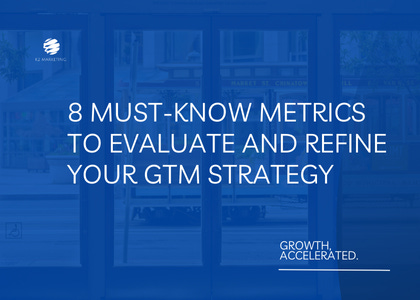Beyond the Blueprint: Building A Resilient GTM Strategy
How to align teams, adapt to change, and leverage metrics for sustained growth.
Companies cannot leave growth to chance. A well-crafted Go-to-Market (GTM) strategy is essential. It bridges your product or service to the market, driving customer engagement and sustained growth. In today’s newsletter, I’m sharing the GTM strategy series I wrote earlier this year to help you refine your approach.
From Vision to Victory: Crafting a GTM Strategy That Fuels Growth
Earlier in my career, I joined a scaling company as a CMO and asked to see their documented GTM strategy so I could align my marketing efforts. To my surprise, it didn’t exist. Instead, each C-suite leader had their own siloed strategy. While this approach might seem acceptable, it’s not. Without a unified strategy, teams were pulled in different directions, priorities were misaligned, and significant opportunities were being missed.
This experience underscored the critical need for a documented strategy that ensures everyone is working from the same playbook to drive alignment and effective growth. Once we took the time to create and implement a cohesive strategy, the results spoke for themselves—we achieved measurable growth.
In this article, I cover the essentials of a GTM strategy: its definition, ownership, necessary collaboration, core components, and how to effectively document it.
From Vision to Victory: Crafting a GTM Strategy That Fuels Growth
This article kicks off a three-part series all about mastering your Go-To-Market (GTM) strategy. Last week, we explored why a strong GTM strategy is essential to your budgeting process—and what key elements should be included. I received some great questions, so over the next few weeks, we’ll be taking a deeper dive into how to create, measure, and adap…
Timing Is Everything: A Guide to Knowing When and How to Update Your GTM Strategy
When COVID hit in 2020, businesses worldwide had to rethink their strategies overnight. What had worked in a pre-pandemic world wasn’t viable in an entirely virtual landscape. Every aspect of their GTM strategy needed reviewing and updating to reflect the new reality.
Your GTM strategy is the map guiding your company toward growth and customer acquisition. But like any map, it requires recalibrating to stay relevant. Knowing when and how to adjust your GTM approach can be the difference between accelerating growth and missing the mark.
In this article, we explore the timing, process, and key elements of updating your GTM strategy to ensure your business remains agile and competitive.
Timing is Everything: A Guide to Knowing When and How to Update Your GTM Strategy
This is the second article in a three-part series about mastering your Go-To-Market (GTM) strategy. Last week, we explored the essentials of a GTM strategy, including its definition, ownership, necessary collaboration, core components, my suggested outline, and how best to document it
8 Must-Know Metrics to Evaluate and Refine Your GTM Strategy
At one point in my career, we tracked hundreds of GTM metrics monthly, attempting to piece together a comprehensive view of performance. It quickly became overwhelming, creating analysis paralysis for anyone trying to interpret the data. This experience taught me the importance of focusing on the essentials.
In this article, I share the eight GTM metrics I rely on to assess strategy effectiveness. By leveraging metrics such as CAC, LTV, and NRR, you can gain actionable insights to refine your approach, drive sustainable growth, and deliver lasting value to customers. When used effectively, these metrics serve as a blueprint for optimizing efforts and achieving your growth goals.
8 Must-Know Metrics to Evaluate and Refine Your GTM Strategy
This is the final in a three-part series about mastering your Go-To-Market (GTM) strategy. Subscribe to Growth, Accelerated today to be notified when the new articles are posted.
Closing Thoughts
A strong GTM strategy is the cornerstone of sustainable growth. By understanding its core elements, knowing when to adapt, and leveraging key metrics, you can empower your teams and position your business for long-term success. Whether you’re starting from scratch or refining an existing plan, the insights shared in this series will help you align your efforts and achieve your goals. Remember, growth doesn’t happen by chance—it’s a result of intentional and strategic action.







